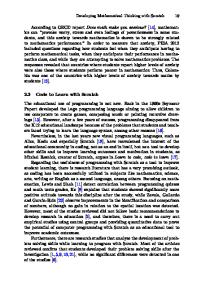Viscoelastic Effects on the Scratch Resistance of Polymers: Relationship Between Mechanical Properties and Scratch Prope
- PDF / 190,765 Bytes
- 6 Pages / 612 x 792 pts (letter) Page_size
- 86 Downloads / 393 Views
DD7.7.1
Viscoelastic effects on the scratch resistance of polymers: Relationship between mechanical properties and scratch properties at various temperatures. Pierre Morel*, Vincent Jardret** *University of Tennessee, Knoxville, Tennessee. **Nano Instruments Innovation Center, Oak Ridge, Tennessee ABSTRACT Scratch resistance of polymers has been the subject of numerous studies, which have lead to specific definitions for plastic characteristic and fracture phenomena during scratch behavior. Viscoelastic and viscoplastic behavior during a scratch process has been related to dynamic mechanical properties that can be measured via dynamic nano-indentation testing. Yet, the understanding of the origin of the fracture process of a polymer during scratch remains approximate. Parameters like tip geometry and size, scratch velocity and loading rate, applied strain and strain rates, have been considered critical parameters for the fracture process, but no correlation has been clearly established. The goal of this work was to analyze the scratch resistance and indentation properties of PMMA as a function of temperature. Compression and tensile properties from literature have also been compared to the scratch results for more complete understanding of the material’s behavior. The analysis of the evolution of the properties of PMMA at various temperatures, along with the evolution of the fracture toughness during scratch with temperature and scratch velocity has helped in identifying a correlation between the tensile stress-strain behavior and scratch fracture toughness for PMMA. This correlation brings a new understanding of the origin of the fracture mechanisms during a scratch process, and the strain effect on the fracture strength of PMMA. INTRODUCTION Polymers such as PMMA enjoy widespread use as surface coatings, because they are inexpensive and easy to process. Nevertheless, their lifetime is often reduced by their poor mechanical properties. Abrasion often degrades optical performances for these materials. A simplification of the complex abrasion process, the scratch test, has been used with success for identifying the main parameters in the wear resistance of polymers. From a general standpoint, the scratch resistance is described by the plastic deformation and the condition of fracture. The distinction between ductile and brittle behavior in the scratch test leads to the definition of some specific tests and parameters. Ductile deformation during a scratch is often evaluated through the contact pressure, the residual groove depth, and the height of the pileup [4,5,9]. The contact pressure has been shown equivalent to the hardness in indentation [6]. The applied load at which the fracture occurs has been used as a measure of the fracture toughness. Previous works have resulted in the definition of strain rate during a scratch process [9, 4]. But, the origin of the ductile/brittle transition is still unknown. The aim of this work is to use the well known ductile-to-brittle transition in the tensile deformation of polyme
Data Loading...











